Tampa, Florida, United States
Architect: Steve Smyers (1997)
7,389 Yards, Par-72
Rating/Slope: 76.0 / 142
My Quick Review: An excellent test with a nice mix of difficult holes and birdie opportunities; Old Memorial looks more difficult than it plays.
The entrance road to the golf course is off a busy city street in a not-so-great area with a sign that reads 'Golf Corse' in big black ink in a child's handwriting. A single gate sits at the end of the road.. understated and no way you're finding the place by accident.
When I drove in there was a lot of commotion as it seemed like every one of the very large caddie program's caddies was out front with a bag or waiting for a bag. Valet takes your car and your clubs are given to your caddie and you're set to go whenever you want. I chose to eat lunch first. How could I not? The owners of Outback Steakhouse own Old Memorial, the food has to be decent. Figuring I had to order beef, I ordered the cheeseburger wrap, which looks disgusting and tastes great and offers a 50/50 chance of a heart attack when you start your round. A plate of Skor and chocolate cookies offered gratis for dessert and I was ready to lumber to the 1st tee.
I was told I was getting a great but eccentric caddie named Mike, who had once been featured in Golf Digest. I told Mike I wasn't that in to keeping score but he said he would keep mine for me. OK...
After I hit my approach to 18, he says to me, 'you ran the table on the back-nine!'. I had no clue what he was talking about. He then showed me the scorecard he used to keep my score and told me I hit the last 11 greens in a row. A copy of the scorecard is below..

The start at Old Memorial is extremely difficult. My caddie noted that it was clever to route the 4th hole close to the clubhouse as some golfers choose to leave after struggling with the opening quartet of holes! The first hole played into the wind the day I played it and the view from the tee, especially for a first-timer, is rather intimidating. Large scale bunkers run all the way down the left, and though the golfer may be tempted to try to cut the corner, it is near 300 yards to carry all the bunkers. Fortunately, there is ample fairway width should the golfer choose to play to the right.

A bold line from the tee provides the golfer the option of running the ball onto a putting surface that tilts from left-to-right.

The second has a more confined feel, playing between tall trees on either side. A massive top-shot bunker runs along the right, and like at the first, the tee shot is more intimidating than difficult.

Once again, the scale of the bunkers make a large target feel small. Bunkers seemingly everywhere make a simple mid-iron approach look more difficult, though there is ample room to miss short and long of this large green.

The third hole can stretch to near 670 yards and like the 1st plays into the wind. From the back three sets of tees the view from the tee is of nothing but forced-carry hazard. From the Founders tees, which I played, the golfer must only avoid a right-side fairway bunker. Another anecdote: John Daly played the newly-opened back tee on a cool and windy day. He hit a driver and a 3W and was left with 190 yards to the pin. His caddie suggested a 5-iron and John said 'nope, pick it up. I don't play holes that require D-3W-5i'.
Anyways, back to the hole, after two-well struck shots the golfer will be left with an approach to a sunken green from ~125 yards.

The 4th is a remarkably difficult par-3, and third hole out of four that played into the wind. My caddie suggested a shot of 220 yards was needed to reach this front-pin. 3W it is! The putting surface is almost completely blind, blocked-out by a bunker that protrudes into the golfer's view of the centre of the green. There is ample room between bunker and green, and the only really bad miss is long.
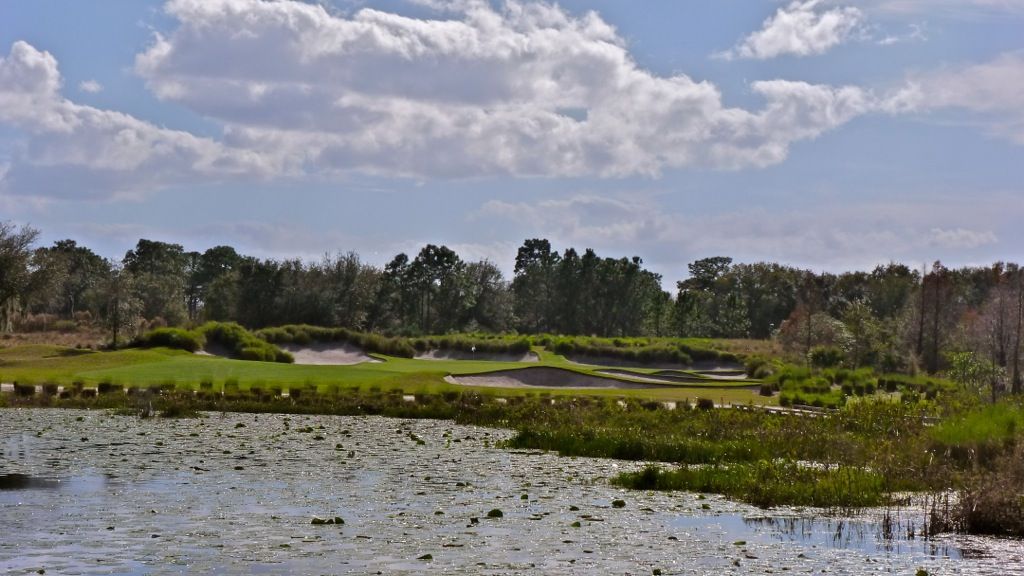

The 5th is another long par-4, and with the predominant wind at Old Memorial offers the first downwind approach of the day. The tee shot is a simple one if the wind is blowing as expected, but with an opposite wind, finding the left-side of the fairway from which the approach is considerably shorter, is a real challenge. Another demanding approach to a peninsula green that offers a huge bailout to the right and a fun kicker that will allow drawing approaches to run onto the green.
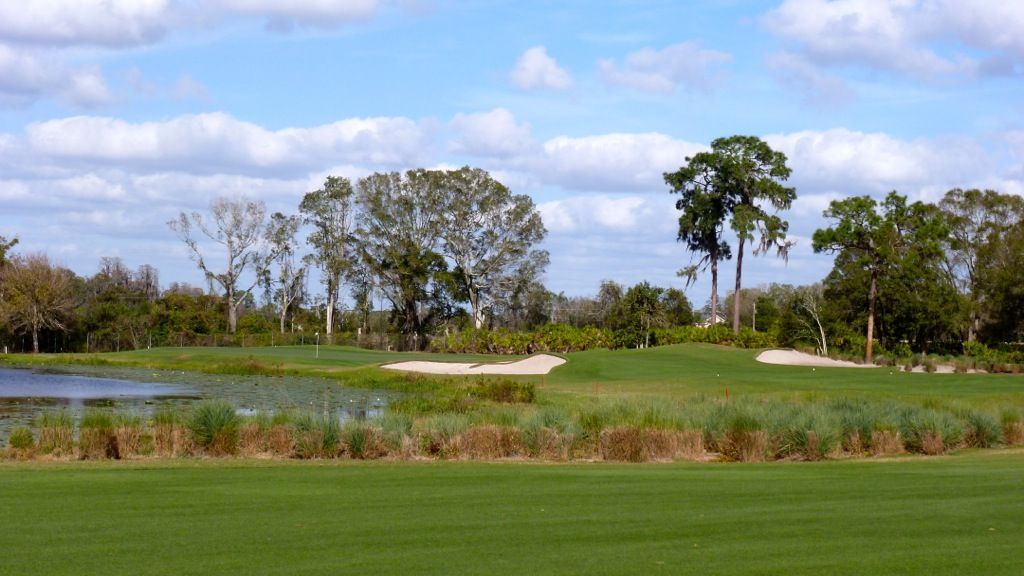
The 6th is a split-tee par-4. The picture below is the right (more interesting and shorter) tee, which asks the golfer to choose his line over the hazard carefully.

The approach should be a mid-iron or less to a narrow green with a putting surface that is blind from the fairway, blocked-out by deceptive bunkers short of the green.

Fairway grass ties-in the collection area right of the 6th green to the 7th tee. The picture also shows undulations in the run-off area that make running recoveries a real challenge.

The 7th is something of a connector hole, not really interesting, but certainly not easy. Downwind, the hole requires a very short iron to an island green, surrounded by sand where long is the worst miss.
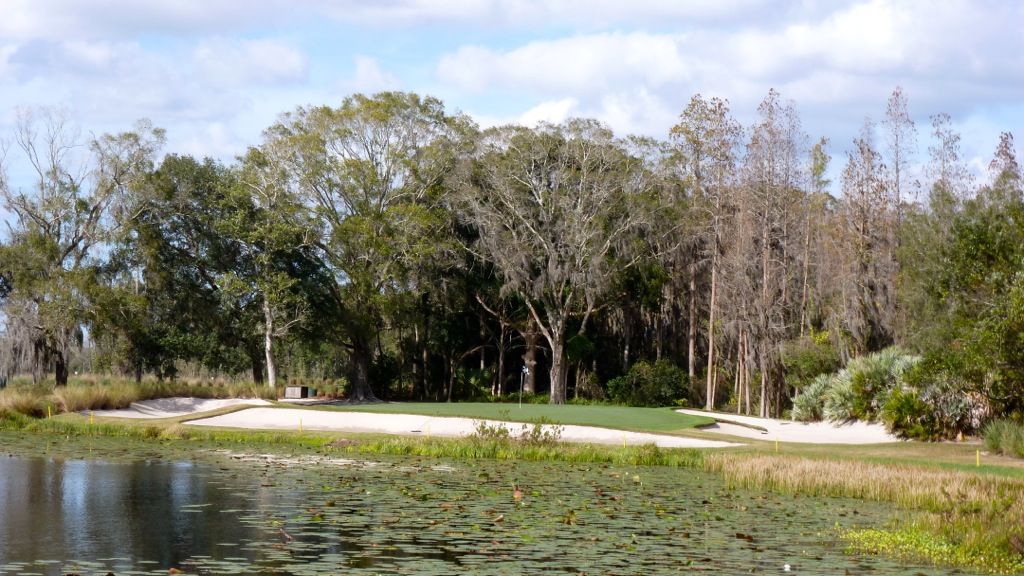
The 8th is a short par-4, theoretically driveable for some with the right wind conditions. Accuracy over length should be the mantra on the 8th tee, as approach angle is far more important than length.

The 8th offers two greens. The left green (pinned) is the much easier target and which is best approached after a tee shot hugging the water on the left. The right green is diabolical -- thin, angled, sloped, deeply bunkered left, and falling off right and long. Approaching this green from anywhere but the right side of the fairway is near impossible.


The 9th is a long par-5 that can be greatly shortened by bombers able to carry their tee shot over trees on the left. Golfers of only human capabilities will be faced with an interesting second shot decision whether to play over a hell's half acre type feature.



The 10th is a mid-length par-4 that doglegs left that failed to capture my interest.
The 11th is Smyers adaptation of the redan and it is an excellent hole. Like the Tillinghast redan at Somerset Hills, bunkers sit well short of the green to intimidate and catch the foozled tee shot. A monstrously deep left-side bunker inspires fear from the tee, but it is the best miss.

From the high point on the kicker short-right of the green, the whole green tilts to the back-left portion of the green.

In true redan fashion, the worst miss is long-right where a deep bunker and even deeper run-off lurk. Recoveries from either spot have little chance of finding the green.

A well-done split-fairway par-5 at the 12th. It is 225 yards in the air to reach the narrower left portion of the fairway, but finding it turns this 560 yard beast into a reachable in two par-5 for even this pea-shooter.
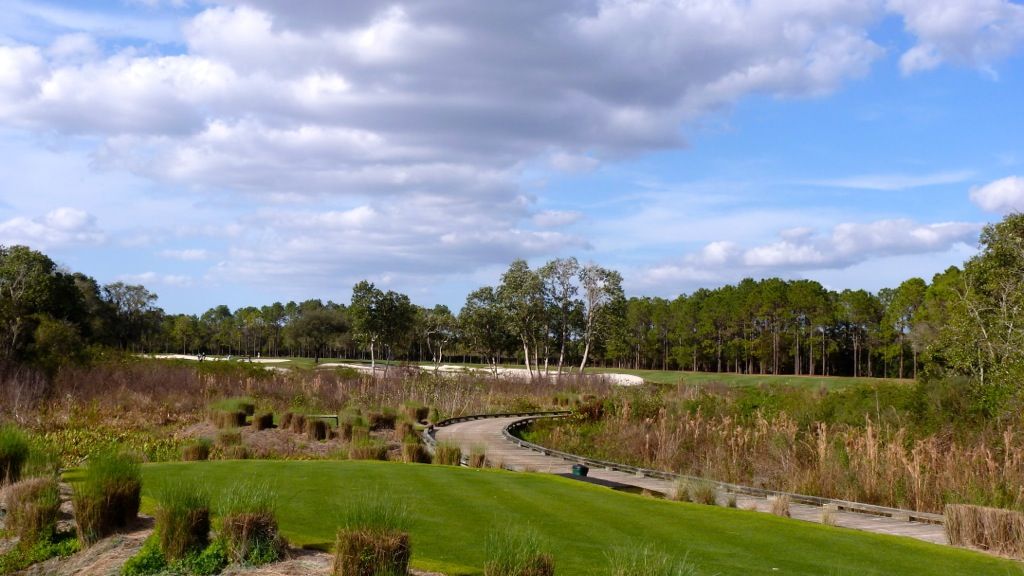
Contouring short of the green makes this seemingly simple approach considerably more interesting.

The short par-4 13th will be driveable by some depending on wind conditions. Taking on the longer left-side carry leaves a much preferred angle into the green.


The 14th continues in the same direction as the 13th and from the back tee demands a 260 yard carry into the wind to reach the fairway. The approach from ~125 is as seen below:

The 15th is a simple but difficult par-4. Like the 4th hole at Dye's The Golf Club, low-key bunkers run along the right side of the hole but cannot be challenged by the majority of golfers.

A definite change of pace at the 16th as the openness of the last 8 holes contrasts sharply with this tree/hazard-lined fairway. I think this is like the feeling on the 7th tee at Highlands Links where the hole feels narrower than it is because of the openness of the previous holes. The Club has worked to widen the 16th to a more playable width recently.

A real second-shot decision. 50 yard wide bunkers cross the fairway 100-150 yards short of the green. Tee shots missing the fairway will likely be forced to lay-up, but finding this green with anything more than a wedge is a real challenge.

A very cool raised green surrounded by fairway cut. Anyone think this looks like Augusta?

The 17th is a good mid-length par-3 that like the 7th is encircled by bunkers.
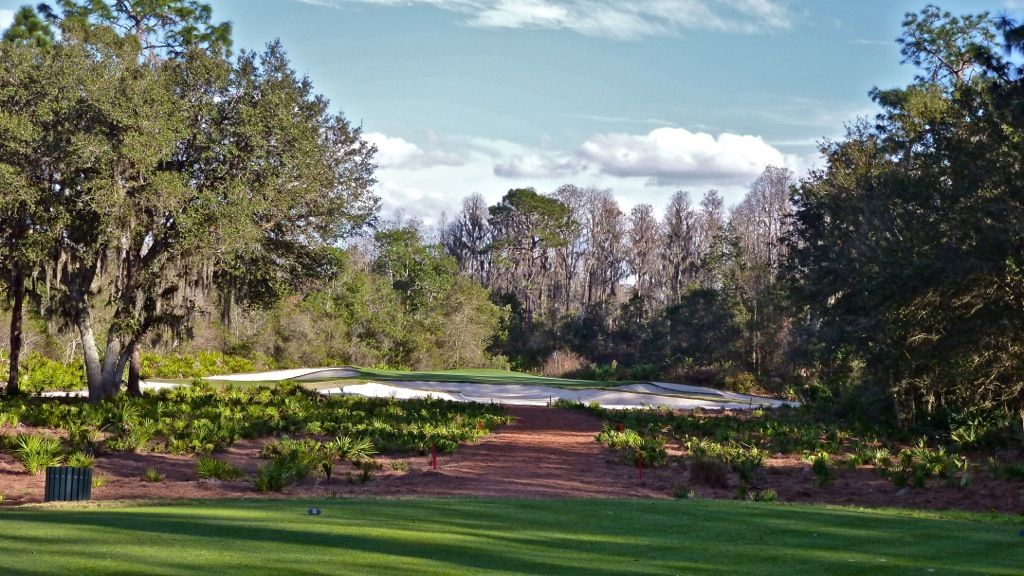
The 18th is a potential round-ruiner and was once called one of the greatest finishers in the country by Golf Digest. Like at the 16th, the Club has widened this fairway.



No comments:
Post a Comment